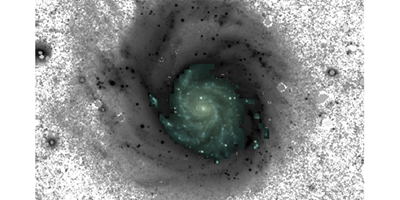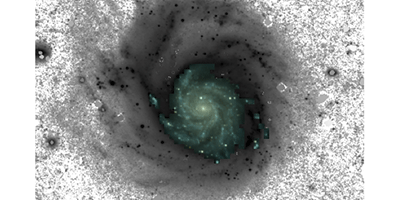Dark Matter Not So Dark?
The calling card of dark matter is that it remains invisible to telescopes. But that doesn’t mean that dark matter can’t occasionally interact with light. Researchers have now examined the possibility that dark matter scatters star light, producing a potentially detectable glow around galaxies. The team found no conclusive evidence of this “light halo,” but they argue that longer wavelength observations could offer an opportunity to “see” dark matter.
Astronomers infer the existence of dark matter from galaxy motion. Rotating galaxies, for example, would presumably fly apart if not for giant clouds of massive particles anchoring them in place. The common assumption is that these particles have zero interaction with light, but some models do imagine that dark matter can decay into photons or scatter photons on rare occasions.
Jonathan Davis and Joseph Silk from the Institute of Astrophysics of Paris, France, investigate a possible signature of dark matter in scattered light. They take as a representative example the Pinwheel galaxy M101, which is a well-studied spiral galaxy located 21 million light years away. They imagine light coming out of the galaxy and bouncing off of dark matter in the outer periphery. This scattered light would create a glow around the galaxy—a bit like the glow around a lamp surrounded by fog. Such a glow is already observed at visible wavelengths by the Dragonfly telescope array, but since it could come entirely from other sources, such as dust and isolated stars, there is currently no way to certify that dark matter makes any contribution. However, Davis and Silk show that astronomers might have a better chance of detecting a dark matter glow at infrared wavelengths, where backgrounds are lower but no observations have yet been taken with enough sensitivity.
This research is published in Physical Review Letters.
–Michael Schirber





